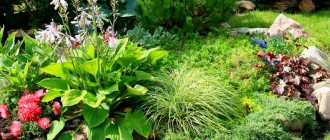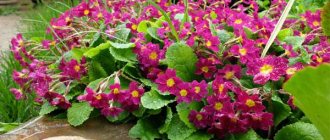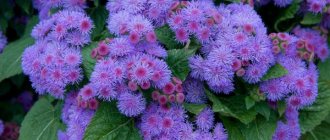Many people are familiar with a beautifully flowering indoor plant that resembles a rose. But unlike a rose, it has no thorns, and the leaves are shiny and glossy. We'll talk about camellia. The plant, which grows in countries with tropical climates, has taken its rightful place on the windowsills of our apartments and is very popular. In this article you will find useful information about growing and caring for camellias at home.
Description
The camellia is native to the countries of Central and Southeast Asia:
- Japan;
- China;
- Philippine Islands;
- countries of Indochina.
Under natural conditions, camellia grows as a shrub or tree, depending on the species. The most common type, Camellia sinensis, is called the tea bush. Its leaves are dried and used to make tea, hence the name “tea bush”. The decorative nature of camellia makes it an adornment of parks and gardens. Thanks to the work of breeders, new hybrid varieties have been developed.
The most famous types of camellia that are grown indoors are the following:
- Japanese;
- Chinese;
- mountain.
Japanese camellia
Japanese camellia grows up to 12 meters in places where it grows naturally. Flowers of double or semi-double structure have different shades from white to red. There are specimens with variegated flowers, solitary or collected in inflorescences. The leaves have a dark green tint.
Chinese camellia grows up to 15 meters and is distinguished by oval leaves with white edges. White flowers have a delicate aroma.
Mountain camellia grows as a bush up to three meters. On thin branches with oval leaves framed by teeth, large flowers grow up to 7 cm in diameter and emit a delicate aroma.
Chinese camellia
Mountain camellia
For indoor growing, camellia montana and japonica are more often used. The basis for selection is the species of Japanese camellia, which has good survival rate. Camellia blooms in winter, from November-December to April.
3.Varieties:
3.1.Japanese camellia - Camellia japonica
The most common subspecies of camellia. In its natural habitat, the plant can reach a height of 1.5 to 5 - 11 m. The leaves are glossy, green, lanceolate, the leaf blades are hard, young leaves have a burgundy-copper tint. The flowers are pink, white or red, often double, the diameter of the flowers varies from 5 to 12 cm. The flowering period begins in the spring and lasts 3 - 4 weeks.
Unfortunately, this capricious beauty is almost impossible to raise at home - it cannot stand stuffy and warm rooms.
↑ Up,
3.2.Middlebury pink camellia
a very delicate plant with large, double flowers of a soft pink hue, the main distinguishing feature of which is that the petals, gradually decreasing in size towards the center of the flower, are arranged one after another in even rows.
↑ Up,
3.3. Camellia sinensis - Camellia sinensis
Large flowering shrubs, from the upper leaves of which the familiar tea is obtained. In nature, plants can reach a height of 10 m. The leaves are green, lanceolate, glossy, and hard. The flowers are creamy-yellow, medium-sized, reaching 3-4 cm in diameter, with 7-8 rounded petals and large orange stamens.
↑ Up,
Another subspecies of Camellia sinensis is Camellia oleifera , a plant with simple white or soft pink flowers, from the fruits of which tea oil is obtained, used in cooking.
↑ Up,
Subtleties of care
Camellia is one of the plants that requires certain conditions to be successfully grown. Therefore, let's talk about how to grow camellia in city apartments and make it bloom. When you see a flowering plant on sale, you feel the desire to purchase a luxurious flower. But often such a purchase ends in the death of the plant after flowering ends.
Creating a comfortable temperature regime
The most important thing is to ensure temperature conditions, because for normal development a flower needs conditions close to natural. For flowering in winter, camellia is recommended to be kept at a temperature of 10-15 degrees. It can withstand slight sub-zero temperatures. It is impossible to maintain coolness in an apartment with central heating. But if you have a glazed, insulated loggia, balcony or cool veranda in a private house, then you can admire the flowering plant all winter. In summer, camellia prefers moderate temperatures in the range of 20-25 degrees.
Camellia is demanding on lighting, so with short daylight hours it is necessary to provide it with additional lighting. As a result, daylight hours should reach twelve to fourteen hours. When placing a flower on a window facing south, you need to take care to protect it from direct sunlight and moisturize it. The most suitable would be an eastern or western window, where the camellia is not threatened by the hot midday sun. On a window facing north, the plant shreds and stretches out.
This may be interesting: Koleria - home care
Watering, moistening and fertilizing
Camellia is one of the flowers that begins to grow shoots in the spring. At the beginning of autumn, buds are laid and flowering occurs in winter. Therefore, watering and the application of mineral fertilizers must be organized taking into account the annual growth cycle. Camellia needs bottom watering through a tray, draining the remaining water after an hour and a half.
In the spring, when new shoots begin to grow, and in the summer, camellias need to be watered frequently and abundantly. But the soil should not be allowed to become waterlogged, because this will lead to rotting of the roots. In winter, watering is reduced to once a week. Camellias are harmed by an increase in calcium salts in the soil, so the water must be settled. You can use melted or boiled water. Sometimes it is recommended to add a small amount of vinegar or citric acid to the water to increase the acidity of the soil.
Camellia needs air humidification, especially if the pot with the plant remains in the apartment for the winter. Hot radiators dry out the air greatly, which can lead to buds and leaves falling off. Therefore, the foliage is periodically sprayed without moistening the soil. You can place the pot in a tray with damp expanded clay or moss. If possible, we recommend installing a humidifier, which will create a comfortable microclimate not only for the flower, but also for people.
In the spring, when young shoots begin to grow, you can start feeding camellias. To do this, use fertilizers for azaleas. The amount indicated on the package is halved. Fertilize no more than 1-2 times a month. In July, fertilization is stopped until next spring. When choosing fertilizers, you should pay attention to ensure that they do not contain calcium and magnesium. Excess calcium in the soil causes buds to fall off.
Crown formation
In order to give a compact shape and remove weak shoots, camellias are pruned. This procedure is performed at the end of flowering. After pruning, the plant produces new shoots more actively. Flower growers who have been growing camellia for many years already know how many shoots need to be left so as not to weaken the bush with abundant flowering.
By cutting shoots, you can form a bush or tree. After pruning, the cut of large woody branches is treated with garden varnish. It is permissible to trim shoots to half their length.
Important! During the formation of buds, we do not recommend rearranging or turning the pot, otherwise the plant may drop the buds.
Growing camellia from cuttings
The best material for growing is considered to be semi-lignified shoots that formed this year. They may be half lignified, but in no case are they completely solid, since such seedlings do not take root in a new place.
When cutting cuttings, you should select strong, healthy branches with several internodes. The length of the finished seedlings should be from 3 to 12 cm.
Preparation of cuttings for rooting is carried out as follows (Figure 3):
- All prepared branches are inspected and all leaves located in the lower part are cut off;
- The cuttings are treated with a root-forming preparation, since camellia belongs to crops with a long rooting period (about 3 months);
- If you do not have the opportunity to plant the cuttings in the ground immediately after cutting, you can place them in water, but you should not delay the moment of planting;
- Pots and boxes for rooting cuttings must have a drainage hole, since the culture does not tolerate stagnant moisture;
- A light substrate consisting of equal parts of sand and peat is poured into the container.
Figure 3. Rooting cuttings of a crop
The cuttings are deepened into the ground to a depth of one and a half to two centimeters at a slight angle. Next, the seedlings are watered, covered with glass and transferred to a room with a temperature of at least +20 degrees. It is worth noting that, as in the case of propagation by seeds, seedlings take a long time to take root - about three months.
Transfer
Camellias are replanted not in February-March, like other indoor flowers, but in late autumn or winter. She begins a period of rest, coinciding with flowering. Therefore, you can replant a flowering plant, being careful. Young plants need to be replanted every year. Large bushes can be replanted by transshipment once every two to three years, when the roots fill the entire volume of the pot.
In preparation for transplanting (planting), it is necessary to prepare a wide pot, at the bottom of which a layer of drainage is poured. You can buy land ready for azaleas and camellias. Since different manufacturers allow deviations in the composition, when purchasing a ready-made earthen mixture, you should pay attention to the presence of the following components in the soil:
- peat;
- sand;
- leaf soil;
- vermiculite.
You can prepare the mixture yourself by mixing peat, sand, leaf and coniferous soil. All ingredients are taken in equal parts, and sand - half as much. The soil must be loose to prevent stagnation of water. Soil acidity should be between 4.0–5.5 units. To increase its permeability, it is recommended to add ground coniferous tree bark. Its pieces are usually sold for planting orchids.
This may be interesting: Types and varieties of flowering Begonias
When replanting a flower, you should pay special attention to the root collar, which should not be covered with soil, but be at ground level. When transferring an adult plant to a larger pot, add fresh mixture. If it is necessary to increase the acidity of the soil, mulch it on top with sawdust or small pieces of bark.
Camellia balsam: growing from seeds with photos
Camellia balsam is a relatively new type of garden plant, valued for its large and lush double inflorescences. Despite the fact that the plant is essentially a balsam, its flowers superficially resemble camellias, which is how the culture got its name (Figure 7).
Figure 7. Features of growing Camellia balsam
This variety is grown in the garden from seedlings grown from seeds. To do this, planting material must be purchased at a specialized store. Seeds are sown in small containers approximately 3-3.5 months before the intended planting in open ground. For this, it is advisable to use light soil, and the seeds are not buried in the soil, but simply scattered over the surface and sprinkled with a thin layer of sand or peat.
Note: Sowing crop seeds is considered traditional: after placing the planting material in the ground, the soil is watered and covered with film or glass.
When the seedlings produce several true leaves, they are plucked, and after up to 4 leaves appear on each seedling, they begin to gradually harden the seedlings, opening the shelters daily. When the seedlings are fully grown, they are planted in open ground in a permanent place.
Reproduction
Camellia propagation is carried out in several ways:
- seeds;
- cuttings;
- layering;
- vaccination.
Growing from seeds
Camellia seeds
Seeds appear on a faded bush in the fall. If you want to start growing from seeds, they must be planted soon after collection, before they lose their viability. Unfortunately, in apartment conditions, camellia practically does not produce seeds. They are obtained either in natural conditions or in greenhouses. Therefore, you can buy seeds in flower shops, but there is no guarantee that they will sprout. Additionally, if the plant is grown from the seeds of a hybrid plant, it may not inherit all the traits and the flowers will look different from the parent. And the representative of the species, Camellia sinensis, transmits its characteristics when propagated by seeds.
Let's look at the steps for planting seeds:
- Ripe seeds should be dark brown, almost black. The main thing is that the purchased seeds do not dry out, so before planting they can be put in a bag and placed in the refrigerator. Before planting, the seeds are dipped in water. If they surface, it is not recommended to sow them.
- Before planting, it is enough to soak fresh seeds in water overnight. We recommend scarifying dry seeds to speed up germination. This can be done in two ways. The first is to cut or pierce the shell of each seed, being careful not to damage the core. The second method is to alternately immerse it several times for a few seconds, first in boiling water, then in cold water.
- A planting mixture is prepared from equal parts of peat and sand. You can take soil for azaleas and camellias. The seeds are placed in the soil, slightly pressing. Place each seed with the “eye” from which the root will appear, down or to the side. You can sprinkle a thin layer of sand or vermiculite on top.
- Propagation by seeds requires careful adherence to temperature conditions. The pot is placed in a place with a temperature of 23 degrees. It is also covered with glass and cellophane to maintain humidity. It is also necessary to provide slight shading from sunlight.
- It will take several months for the seeds to germinate. After the second leaves appear on the sprouts, they are planted in separate pots, picking. Camellia grown from seeds is characterized by good adaptability to new conditions. Flowering of a young plant occurs after approximately five to eight years.
Planting seeds
Growing from cuttings
It is easier to grow a flowering plant using cuttings, which are taken in late May - early summer. At this time, the shoots turn brown and are ready for cuttings.
You cannot take green shoots, as they will not take root. It is worth paying attention to ensure that the growth bud is well developed. The soil is taken the same as for camellia seeds - a mixture of peat and sand in equal proportions.
Rooted cuttings
Before planting, it is recommended that the end of the shoot, which goes deep into the ground, be dipped wet in a rooting powder, for example, Kornevin. There are other rooting agents on the market, so don’t stop at Kornevin only. The soil should be moist, and it is recommended to cover the planted cuttings with film or a jar to maintain the humidity level. Four months are enough for cuttings to root. During the rooting period, it is necessary to maintain a constant temperature of 23 degrees. At higher temperatures, leaf growth may begin, and the root system will be delayed in development, and the sprout may die. Flowering occurs after two years.
This may be interesting: Aechmea - types and varieties of tropical exotics
Reproduction by offspring
Root shoots that appear in an adult plant and have reached a sufficient size, when transplanted, are separated from the parent bush and planted in a separate pot. This is one of the simplest methods of reproduction, but you have to wait a long time for the offspring to appear and develop.
Reproduction by grafting
Camellia grafting is performed using two methods:
- butt;
- splitting
The butt drive makes it possible to achieve propagation for camellia species that do not root well from cuttings. The root system of the scion is preserved until its complete survival.
Reproduction by grafting
Camellia is also grafted using a new method specially developed for it. A cutting is taken for rooting and a shoot grown from seeds. The shoot must be at least five centimeters. Its root is split and cut off at the level of the cotyledons. The cut is split and the tip of the cutting is inserted into it. Rooting of cuttings is carried out in pots in soil consisting of peat and sand (1:1 ratio). The pot is covered with cellophane and a jar.
Growing camellia from seeds
To successfully grow a plant from seeds, you need to know the details of this process. First of all, you need to choose the right seeds. Planting material collected from domestic plants does not have high germination rate, so to grow a full-fledged plant, it is better to buy processed seeds in specialized stores.
Note: To preserve the germination of seeds, they are stored in airtight packaging in the refrigerator until planting. Before planting, they are soaked in water overnight, and immediately before sowing, carefully pierce the shell so that the seeds germinate faster.
The seeds are planted in small pots, no more than 9 cm in diameter, filled with light soil. There is no need to press the seeds into the soil too much: just deepen them slightly and sprinkle them with a small layer of soil. Each container is covered with glass or film and transferred to a warm room.
Figure 2. Sowing seeds at home
In the future, it is necessary to ensure that the soil in the pots is moist at all times, but without stagnation of water. Seedlings are regularly ventilated by raising the cover. The film or glass is removed only after the shoots have completely emerged. When the seedlings have formed 4 true leaves and the height of the plants reaches 7 cm, they are transplanted into larger pots. Further transplantation, including in open ground, is carried out only after the seedlings have fully grown.
All stages of preparing and sowing crop seeds are presented in the video.
Diseases and pests
Most problems with camellia are associated with violations in the maintenance and watering of the plant. We list the possible causes and their consequences:
- Dropping of camellia buds and browning of leaves is often associated with overwatering. In this case, soil acidification may have occurred. It is necessary to establish proper watering, or, as a last resort, replace the soil, paying attention to good drainage.
- Brown spots that appear on the leaves in summer indicate sunburn. It is recommended to shade the flower.
- Irregular watering, which leads to dry or waterlogged soil, causes leaves to fall off. There is only one way out - to establish proper watering.
Diseases and treatment
Gray spots on the leaves mean that the camellia is affected by oidium. At the onset of the disease, you can apply treatment (washing, wiping) of the leaves with a soap solution. In case of severe damage, it is recommended to use fungicidal preparations for treatment according to the instructions.
Camellia affected by oidium
Camellia japonica is prone to cucumber mosaic disease, which manifests itself as yellowing of the leaf veins. Insecticides are used for control.
Due to fungal infection, the leaves become covered with black spots and the flower petals become brown. Progression of the disease can lead to shedding of flowers. Treatment with fungicides will help in the initial stages of the disease. If the treatment is not successful, then such a flower should be thrown away.
Pests
The main pests of the beautiful camellia are aphids, mealybugs, scale insects, spider mites, and lone mower.
White mealyworm larvae are easy to spot on leaves. They are removed with a cloth moistened with soapy water or alcohol or cologne. Damaged leaves can be trimmed. As a last resort, the plant is treated with karbofos at the rate of twenty to forty drops per liter of water.
Mealybug
Controlling aphids, which cause leaves to turn yellow and wrinkle, requires patience and persistence. Adults can be removed with a soap solution or special aerosols. It is recommended to carry out treatment every two to three days to destroy new insects.
To combat spider mites, the best and safest for others are oil emulsions that are sprayed on the plant.
Spider mite
When the scale insect appears, the leaves turn black and brown tubercles appear on them. They are removed manually and then treated with insecticides. Be sure to move the flower away from other plants.
Shchitovka
The mower damages the root collar of the flower, which leads to the death of the plant if the pest is not recognized in time and the bush is not treated with insecticides.
Lady Campbell
An interesting variety with large inflorescences reminiscent of peonies. The petals, however, are not even, but terry. The buds are painted red, with a barely noticeable white stripe running down the center of the petals. The flowers are quite large: the diameter of each is at least 10 cm. It grows in the form of a bush, is highly branched, and reaches a height of 1-1.5 meters. The leaves are round, rather wide, glossy, covered with fine white hairs. The stamens are yellow or white, the anthers are golden, and grow abundantly. The number of buds on one bush can reach hundreds. Thanks to the special arrangement of the petals, the flower looks very lush.
Camellia Lady Campbell
How to propagate camellia?
There are three ways to propagate this plant:
- cuttings;
- grafting;
- seeds.
Propagating camellias using cuttings is the easiest way. Shoots are cut off in late spring - early summer
It is important that they are brown: green shoots may die
Before planting, the tips of the cuttings can be dipped in special compounds for better rooting. Plant the shoots in moist soil and cover the top with transparent material. It is recommended to maintain a constant temperature of +20-23 °C for them. After 3-4 months, the cuttings should take root.
When propagating camellias from seeds, it is advisable to purchase seeds in specialized stores. They are lowered into containers with soil at a short distance from each other and covered with film. When two leaves appear from each seed, they can be planted in separate pots.
The grafting method is quite complex and is used if cuttings cannot be used. The upper shoots of the plant are selected for grafting. It is also necessary to maintain a constant temperature and humidity level.
These are the main features of this plant and its care. Of all the indoor flowers, camellia flowers require special attention.
It is especially important to comply with temperature conditions, recommendations for lighting, watering, fertilizing and replanting. If you comply with these requirements, then the camellia will delight the owner with its beauty for a long time.
Camellia care: main problems
If you carefully read the table, you will know about the problems of growing a tea bush at home and avoid mistakes:
| Problems | What to do |
| Drying of leaves, falling off of buds before blooming. | The problem is improper watering. |
| Leaves with brown spots. | Remove the flower from direct sunlight. |
| Unreasonable leaf fall. After all, this phenomenon is observed several years later in spring or summer, when their natural replacement occurs. | Excessive or insufficient lighting. |
| The appearance of yellow spots on the foliage, the falling of leaves and buds is most often associated with aphids. | Wash the plants with soapy water. |
| Plants wither due to damage to the root collar by weevils. | Spraying with special means. |
| Mealybug. | Treatment with karbofos. |
To avoid difficulties when growing camellias at home, watch the video.
Introduction
The camellia owes its name to the naturalist Joseph Kamelius , who first introduced Europeans to this culture. In its homeland, camellia can reach gigantic sizes. Trees 5-6 m high are considered the norm in Japan. In addition, in the city of Hagi, where camellia festivals are held annually, there is a whole grove of Japanese camellia trees, about 15 m high.
Japanese camellia in natural habitats
However, it seems unlikely to obtain such sizes under our growing conditions; Usually, the trees or bushes growing here reach no more than 1.5 m in height.
Grove of camellias
Camellia is an evergreen plant with dense foliage. Traditionally, the predominant color of the leaves is dark green, often glossy. The leaf size is predominantly 6-8 cm; Most often the leaves are characterized by an oval shape, but elongated leaves up to 11 cm in length are also found.
The plant branches abundantly and usually the outermost branches act as peduncles. The buds form in the axils of the leaves.
Briefly about cultivation
- Flowering: 1 to 3 months from November or December.
- Lighting: bright diffused light.
- Temperature: in spring and summer – from 20 to 25 ºC, in autumn – 18 ºC, and from December to February, during flowering – 8-12 ºC.
- Watering: moderate and even, as soon as the top layer of soil dries. During cool wintering, watering is scarce.
- Humidity: high. The pot with the plant should be kept on a tray with wet expanded clay. Before the buds appear, you can spray the leaves with water at room temperature.
- Feeding: throughout the year, once every three weeks with complete mineral fertilizer.
- Pruning: at the end of autumn, the tops of the shoots are trimmed or pinched to stimulate the development of axillary buds.
- Rest period: not clearly expressed.
- Replanting: young plants - annually, adults - as needed. For old plants, the top layer of substrate in the pot is changed annually.
- Substrate: 2 parts leaf soil, 2 parts peat, 1 part turf soil and 1 part sand.
- Reproduction: seeds, cuttings and grafting.
- Pests: spider mites.
- Diseases: all problems of indoor camellia are associated with improper care or improper living conditions.
Read more about growing camellias below.











